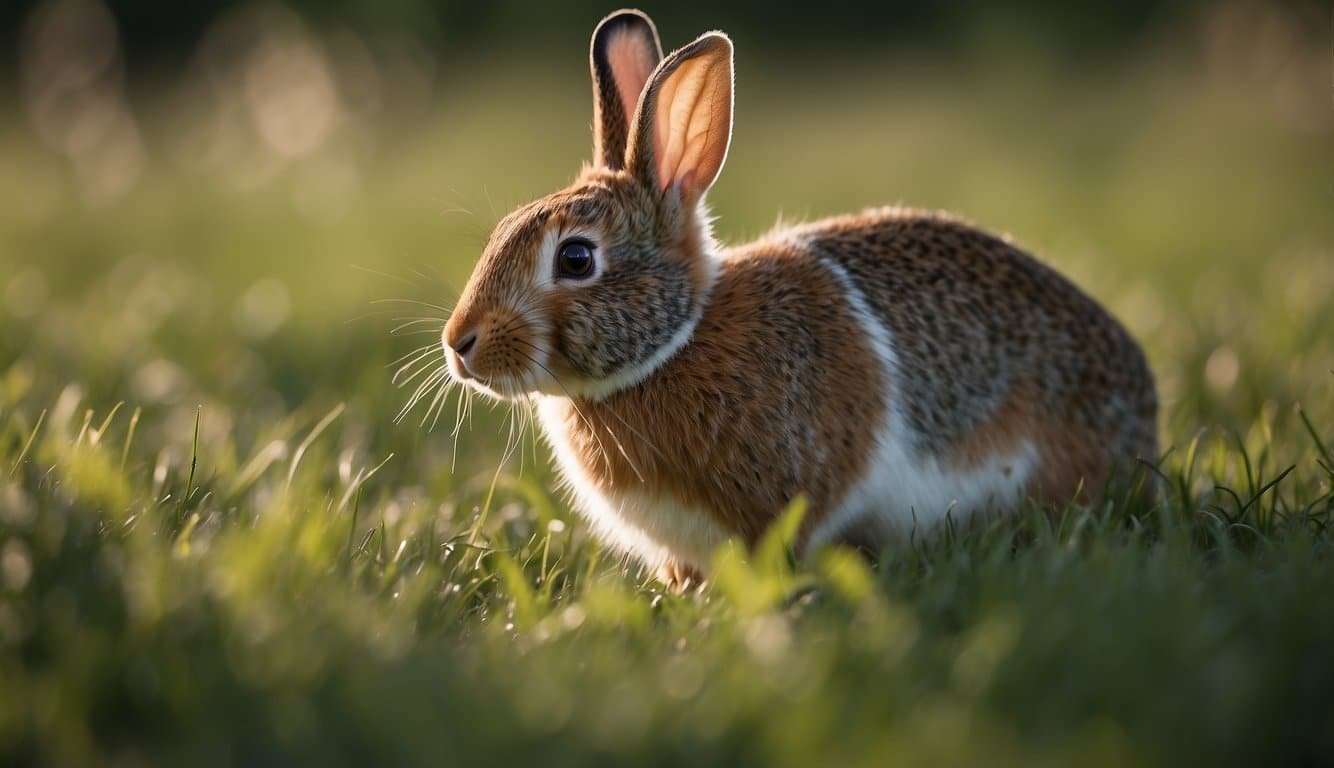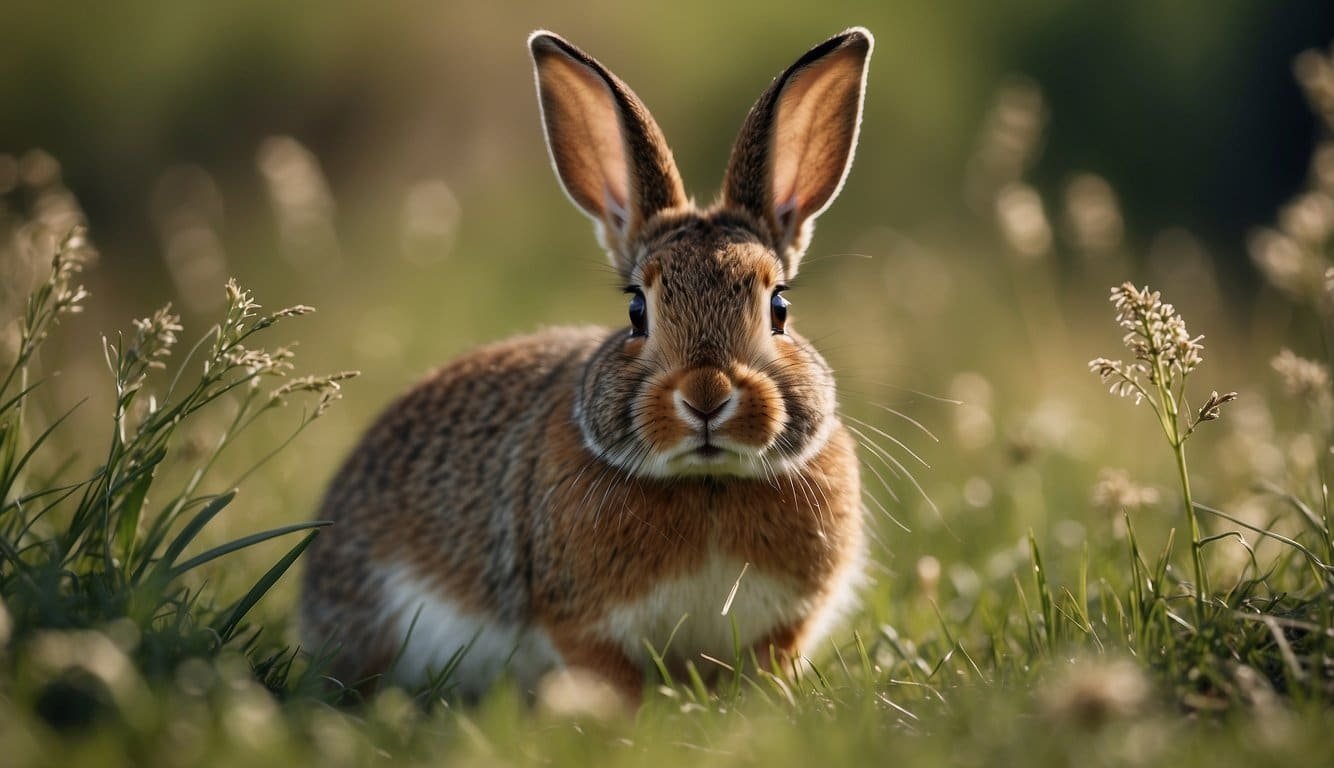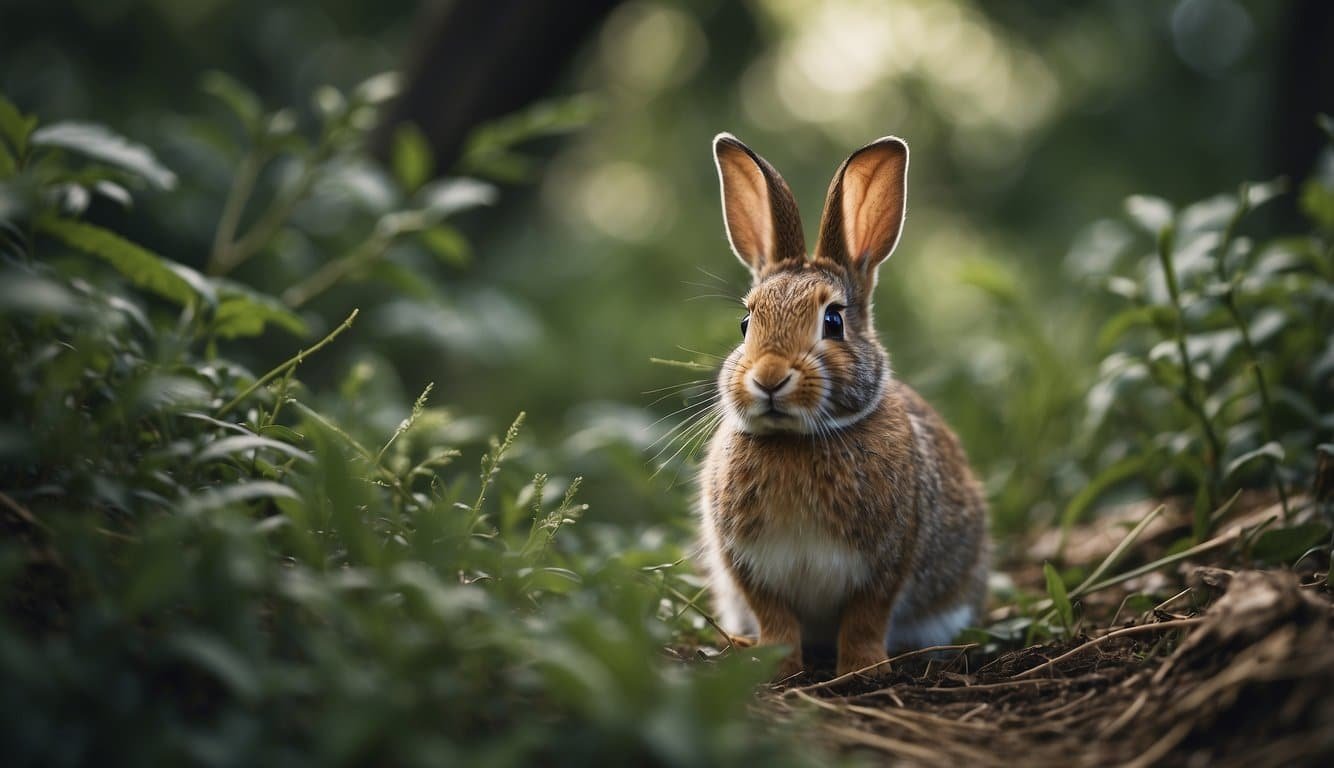Understanding Wild Rabbits

Exploring the world of wild rabbits is a journey through a variety of physical traits and widespread habitats. These creatures are part of the Leporidae family within the order Lagomorpha and exhibit a range of interesting characteristics and behaviors.
Physical Characteristics
Wild rabbits, including the well-known European rabbit and various cottontail species, showcase diverse physical characteristics. Typically, the European rabbit’s fur is grey-brown, while cottontails tend to have a more varied color palette to blend into their specific environments. A defining feature of all wild rabbits is their iconic tail, which is often white and fluffy, serving as a warning signal to others when danger approaches. In terms of size, wild rabbits usually measure about 40 cm (16 in) in length and can weigh between 1.1 to 2.5 kg (2.4 to 5.5 lbs). They are alert and active animals, known for their sharp senses and quick movements.
- Fur Color: Ranges from grey-brown to various colors for camouflage
- Tail: Short, white “cotton” tail
- Size: Approximately 40 cm in length
- Weight: 1.1 to 2.5 kg
Species and Distribution
The European rabbit (Oryctolagus cuniculus) has a vast distribution, originating from the Iberian Peninsula but now widespread across the globe due to human introduction. The invasion of wild rabbits in Australia stands as a testament to their adaptability and potential for ecological impact. On the other hand, cottontail rabbits are primarily found in the Americas, with species like the Eastern cottontail (Sylvilagus floridanus) widely distributed in the United States. Wild rabbits are highly adaptable, making their home in various habitats from woods to grasslands. They are territorial animals, with intricate burrow systems for safety and breeding. Reproduction rates among wild rabbits are notably high, a key factor in their ability to colonize and sustain their populations across diverse environments.
- European Rabbit: Native to the Iberian Peninsula, now globally distributed
- Cottontail Rabbits: Commonly found in the Americas
- Habitat: Woods, grasslands, and even semi-urban areas
- Reproduction: High rates contributing to quick population growth
Habitats and Behaviors

Wild rabbits are remarkable for their adaptability, occupying a range of habitats from grasslands to forests, where they construct intricate burrows and display unique social structures. These creatures have evolved to forage efficiently and navigate the dangers of their environment, all while maintaining intricate social connections and ensuring the continuation of their species.
Diet and Foraging
Wild rabbits primarily eat grass, herbs, and shrubs, with their diet shifting slightly depending on the season and the available vegetation in their habitat. They are most active during dawn and dusk when they leave their warrens to feed. These crepuscular feeding habits reduce the risk of predation as they forage in fields and grasslands.
Social Structure
Rabbits are social animals, living in groups within extensive, complex burrow systems known as warrens. Dominance hierarchies exist within these populations, and territories are marked and defended by the inhabitants. While they are generally territorial, their social structures allow for the sharing of responsibilities such as nesting and nursing.
Reproductive Habits
Reproduction is a pivotal aspect of wild rabbit behavior. They construct nests within their burrows where they can nurture their young, referred to as kittens. The reproductive rate of wild rabbits is notably high; they have multiple litters per year, which is a key factor in the growth of their populations. Nursing young is a critical period during which the mother provides milk and protection to her kittens inside the nest.
Survival Challenges and Conservation

Wild rabbits face a complex battle for survival as they navigate a world filled with both natural and human-imposed challenges. Understanding these hurdles is key to their effective conservation.
Predators and Threats
Natural predators pose significant risks to wild rabbit populations. They are preyed upon by a variety of animals including foxes, cats, and birds of prey. In Iberia, where the European wild rabbit is native, this species plays a pivotal role in the local ecosystem, as many predators rely heavily on it for food. However, the introduction of diseases such as myxomatosis and tularemia have led to severe declines in their numbers, escalating their risk of becoming threatened.
Disease Spread and Impact
- Myxomatosis: A viral disease initially introduced to control rabbit populations; it has since become a recurring threat to their survival.
- Tularemia: Also known as ‘rabbit fever,’ this bacterial disease can decimate rabbit populations and is also transmissible to humans.
The combined pressures from predation and disease challenge their ability to maintain healthy populations.
Human Impact and Protection
Wild rabbits also grapple with challenges instigated by humans. Domestic rabbits, which are often released into the wild, may become invasive species, competing with wild rabbits for resources. Human activities, like agriculture and urban development, fragment habitats, reduce food availability and introduce more roads, which increases the likelihood of vehicle collisions.
Conservation Efforts and Human Intervention
- Habitat Protection: Creating and preserving natural areas where rabbits can thrive without human interference.
- Disease Management: Strategies to control and prevent the spread of diseases that affect rabbit populations.
Initiatives for conserving rabbits include creating fences to protect gardens without harming the rabbits and implementing targeted conservation programs, like the extensive efforts unfolding in Spain to sustain the population of wild rabbits, which are surprisingly not endangered but remain an important species for ecosystem balance.
This delicate interplay of survival, threats, and protection underscores the continued need for thoughtful conservation strategies to ensure that wild rabbits continue to hop along in the wild for generations to come.

